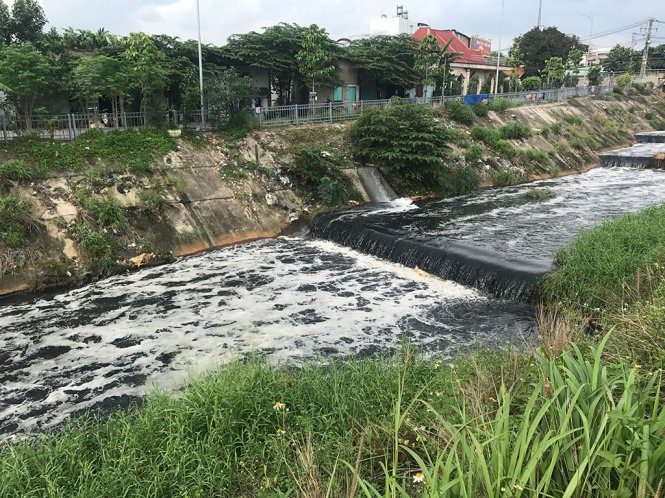 Environment
Environment

Wastewater disposed by factories in Bình Dương Province’s industrial zones is the main cause of Ba Bò Canal pollution, according to a new report by the HCMC People’s Committee.
 |
| Ba Bò Canal is heavily polluted by untreated wastewater from industrial zones in Bình Dương Province. — Photo tuoitre.vn |
HCM CITY — Wastewater disposed by factories in Bình Dương Province’s industrial zones (IZ) is the main cause of Ba Bò Canal pollution, according to a new report by the HCM City People’s Committee. Thereby, wastewater from those IZs has been not drained into the centralised water treatment plant while discharged directly into the canal.
HCM City and Bình Dương Province have invested VNĐ1.3 billion (US$70,000) to improve the pollution of Ba Bò Canal for ten years. Its biological water treatment lake is designed with the capability of 20,000cu.m per day. But this technology is only suitable for treating domestic wastewater, not industrial waste.
The analysis relied on water samples taken at the sewer of the centralised wastewater treatment plant (in Sóng Thần 1 and Sóng Thần 2 IZs) and at the end of the water discharge line showed vast differences. The concentration of pollutants at the end of the discharge line was nearly 26 to 43 times higher than the total suspended solids at the beginning of the line. Chemical oxygen demand at the end of the line was roughly nine to 12 times higher than at the beginning.
The sample examined 18 monitoring parameters. Eight of these parameters exceeded the allowed limitations, indicating serious pollutants.
In its report to Bình Dương Province, the HCM City People’s Committee said that some factories in the provincial industrial zones had discharged wastewater directly into Ba Bò Canal through underground conduits, causing pollution.
HCM City People’s Committee asked Bình Dương Province to investigate the activity of direct discharge of untreated wastewater into the drainage line.
The drainage line, which receives wastewater and then drains it into the Ba Bò Canal has a discharge flow of 14,000cu.m per day, accounting for 80 per cent of wastewater discharged to the canal. — VNS




